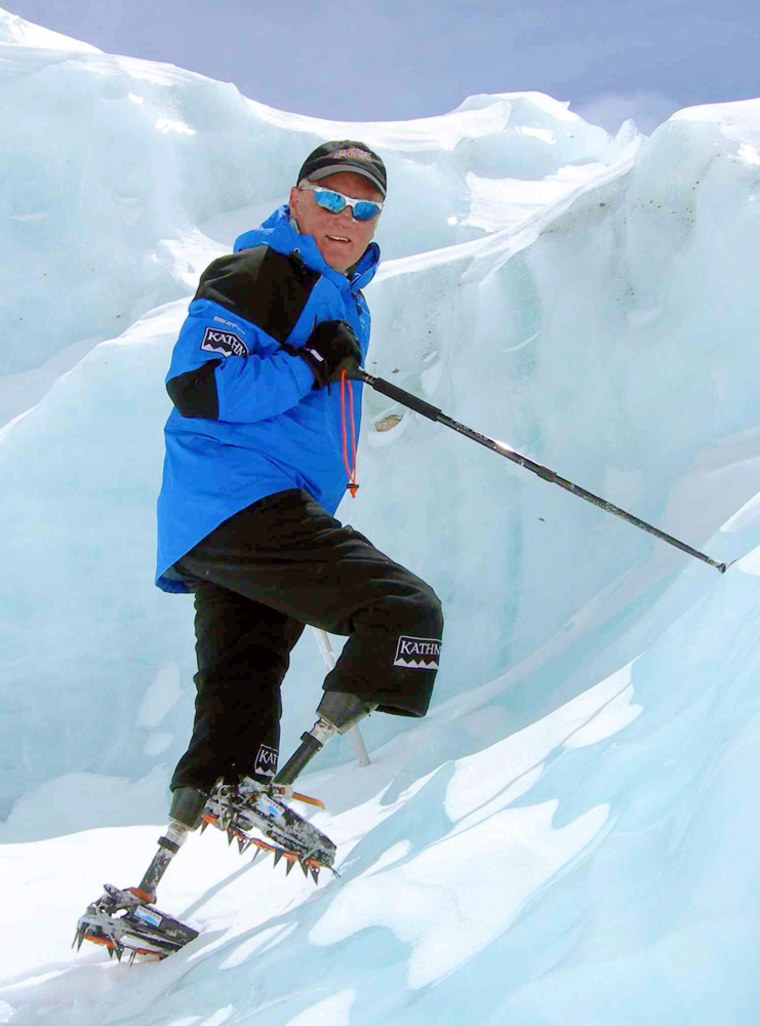A New Zealand mountain climber who lost both his legs to frostbite has become the first double amputee to conquer Mount Everest, despite breaking one of his artificial limbs during the ascent.
Separately, a South Korean, who also has a New Zealand passport and a home in Auckland, climbed the mountain from one side and descended from another, the third such climb in history, authorities in Nepal said.
The amputee, Mark Inglis, 47, called his wife, Anne, on Monday night to tell her he was standing on the summit of the 29,035-foot peak, the world’s highest mountain, the New Zealand Herald reported.
“He’s dreamed of this all his life, probably. He’s over the moon,” the the newspaper quoted Inglis’ wife as saying.
Media reports said one of Inglis’s carbon-fibber legs snapped while climbing at around 6,400 meters and he was forced to repair it with spare parts.
Both legs lost to frostbite
In 1982, Inglis lost both his legs from below the knees due to severe frostbite suffered after a blizzard trapped him and a fellow party member in a cave in New Zealand’s Mount Cook for 14 days.

New Zealand Prime Minister Helen Clark hailed Inglis’s climb.
“To reach the summit of Everest is a once-in-a-lifetime achievement for any climber, but for Mark Inglis it will be even more satisfying,” she said in a statement.
New Zealander Edmund Hillary and Sherpa Tenzing Norgay became the first climbers to conquer Mount Everest in 1953.
In the Nepali capital, Katmandu, the tourism ministry said a team of South Korean climbers sent their leader, Park Young-Seok, and his Nepalese sherpa companion, Serap Jangbu, up the Tibetan north side of Everest.
The two climbed down the Nepali southern side after reaching the summit, the ministry said in a statement late on Monday.
Park said he and Jangbu encountered waist-deep snow on the Nepalese side during their climb, known as a traverse of the mountain.
